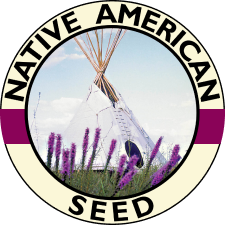This mid-sized grass is the official State Grass of Texas and is often used in ornamental plantings. The grass grows 1 to 2 feet, with oat-like seeds along one side of its stem from July to September. It spreads by seeds and roots and makes a good planting with Little Bluestem. Sideoats grows on well drained uplands, shallow soils on ridges and rocky areas. May be found on sand, loam and clay soils ranging from deep to very shallow from Kentucky to the Gulf of Mexico. Sideoats takes full sun to dappled shade. It is a larval food source for butterflies. Turkeys use it for food and cover.
The Natives are Friendly
Sideoats Grama, Bouteloua curtipendula, grows from southern Canada to Argentina. It is one of the fundamental components of the short grass prairies. Tragically today Sideoats Grama is endangered or extinct in more than nine states which means that short grass prairies no longer exist in those states either. The North American Prairie is one of the most endangered ecosystems on earth with 99% of the prairie being destroyed in the last 150 years. Since Sideoats is the largest and coarsest of the gramas it can thrive in both urban and rural settings. Sideoats Grama is a valuable range grass as well as an interesting landscape ornamental grass and got its name from the oat-like seeds that hang down on only one side of the stem. This unique seed structure makes it a nice ornamental grass. It is a perennial bunchgrass, ranging from 15” to 30” tall, and is unlike most grasses in that it has a noticeable orange and purple flower.
Because of its size and its ability to cure well Sideoats Grama provides a sustainable high forage rate for grazers as well as food, nesting and cover for quail, dove, turkey and other wildlife. It is in an invaluable addition to any environment for wildlife. Add to this its ability to grow in most soil conditions from rocky slopes to clay and you have a range grass that is a dependable performer. This is one of the reasons that in 1971 The State of Texas designated Sideoats Grama the official state grass of Texas. As spring draws near, and you start looking at your landscape contemplating what to plant, don’t overlook the importance of native grasses. Sideoats Grama deserves the recognition as the state grass because of its versatility and benefits it offers in both urban and rural settings.













